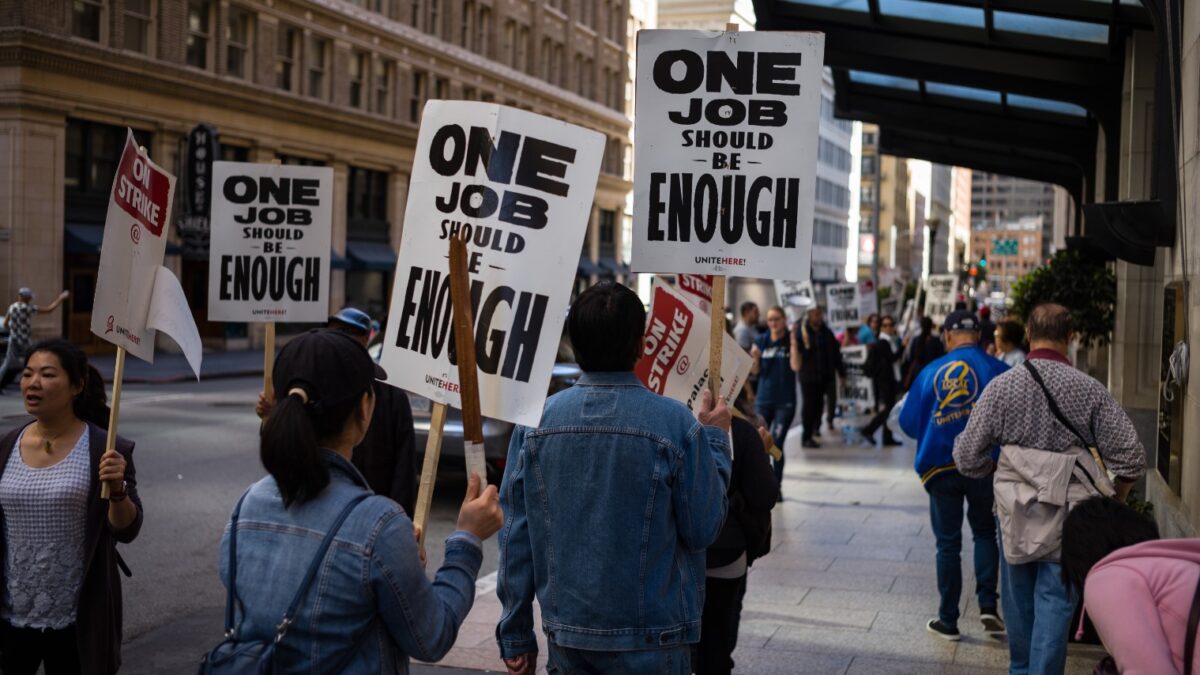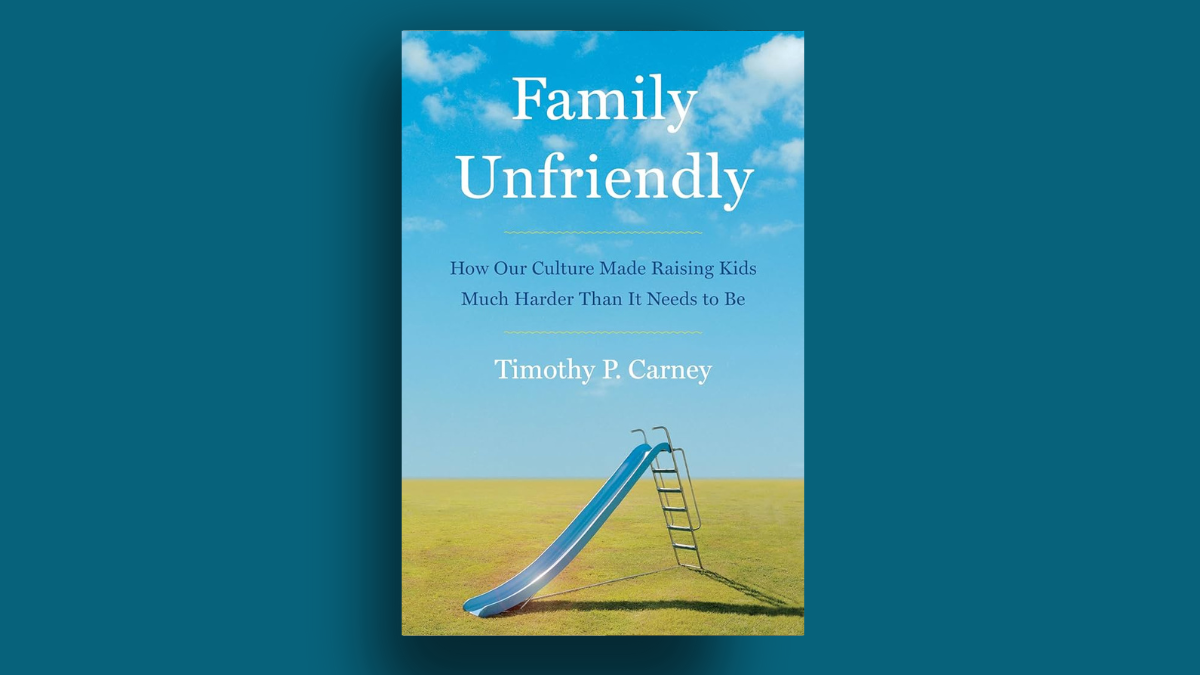For the past decade, conservatives have been going through something of an identity crisis. What was once a movement that embraced free-market capitalism, globalism, expertise, and military dominance now champions working-class populism, nationalism, subsidiarity, and non-interventionism. What keeps both forms of conservatism on the same spectrum is their opposition to leftist ideology, commitment to law and order, and reverence for Western civilization.
Most of today’s conservatives are somewhere in the middle of this spectrum. While they acknowledge the many virtues of the old conservatism, which defeated the Soviet Union, facilitated technological advancement, lifted billions of people out of poverty, and made the U.S. an economic and cultural superpower, we also see the rise of the administrative state, the futility of pointless wars, the emergence of an elite class of oligarchs, and the widespread neglect of the working classes.
Unfortunately, when it comes to these new concerns, many conservatives lack the vocabulary to articulate their arguments. Yes, they can explain why communism is bad, why a strong military is important, and why hard work and personal responsibility are necessary for success, but they struggle with explaining the importance of labor, making the economy fairer, or decentralizing the current globalized economic system.
Fortunately, Michael Lind’s new book Hell to Pay: How the Suppression of Wages Is Destroying America is a clear and concise primer to equip modern Americans of all political stripes to talk seriously about American labor. Far from being a niche issue, Lind shows how the decline in worker power has fed into a host of other problems. Not only are workers making far less than they should, but this injustice has resulted in the growth of the welfare state, crisis at the border, economic immobility, ever-expanding credentialism, and the devastation of American families.
You’re Paid What You Deserve?
Lind begins his book by taking on the popular capitalist narrative that “you are paid what you deserve.” According to this logic, CEOs and entrepreneurs are just that much smarter, more productive, and more ambitious than their employees and thus deserve to be compensated a thousand times more than they are. Although most Americans tend to accept this argument, it happens to be absurd. As Lind explains, “What workers are paid, along with their working conditions and benefits, depends on the relative bargaining power of workers and employers.”
Therefore, it’s illogical and offensive to tell poor Americans that “they should learn to code” to boost their earning potential. Rather, these workers should be given more bargaining power. More than preaching personal responsibility and somehow reforming public education and training programs, addressing the plight of the American worker must start with giving him leverage: “Notwithstanding the attempts of the economic elite to distract us with misleading explanations for low wages in the United States, worker bargaining power remains the central issue.”
This problem began with the decline of labor unions. After peaking in the 1950s when “labor unions represented more than a third of wage and salary workers in the United States, almost all of them in the private sector,” labor unions in the U.S. have dwindled to “10.3 percent” of all American workers, half of which are in the public sector. In the past half-century, business owners and politicians have worked together to replace an empowered workforce with a “low-wage/high-welfare” system, where the government facilitates and subsidizes the use of cheap labor through free trade policies and social welfare for underpaid workers.
In the following chapters, Lind outlines how this system works out. The first of which focuses on what employers do to suppress wages: salary bands, no-poach agreements, non-compete clauses, forced arbitration, and contract or “gig” work. If employees try to leave for better pay, their employer can rig the system so they are paid the same (salary bands); they can also be blackballed or contractually prohibited from leaving (no-poach agreements and non-compete clauses). And if they complain about this, they must go through the employer’s form of due process (forced arbitration). However, all this is moot because employers are now increasingly resorting to contract work, conveniently remaining off the hook for pesky concerns like salaries, benefits, and working conditions — all of which leave millions underemployed and under-compensated in the so-called “gig economy.”
Lind then discusses the two wage-suppressing strategies most people will recognize — offshoring operations to other countries and hiring low-skilled immigrants. The motives here are simple enough: “boost corporate profits by replacing high-wage American workers with low-wage foreign workers.” As a consequence, the manufacturing hubs of the heartland are hollowed out, and laid-off American workers are forced to compete with low-skilled immigrants for whatever low-paying scraps are left over.
This prompts the usual objections that it was automation, not offshoring, that eliminated American manufacturing jobs and that immigrants will do jobs that Americans refuse to do. Lind debunks each of these points in quick order. In response to the “‘automation did it’ alibi,” he simply reviews the numbers and demonstrates that it was primarily Chinese and Mexican workers taking Americans’ jobs, not robots. As for the jobs that Americans supposedly refuse to do, Lind points to the majority of Americans already doing those jobs, outnumbering migrant workers by large margins.
But surely, the use of cheaper labor makes products cheaper. Considering the tradeoff of devastating the American workforce for such a meager reduction in the price of a few key goods, Lind rightly mocks this kind of argument: “Offshoring plus a flood of imports turned formerly flourishing industrial regions in the American Midwest and Northeast and elsewhere into abandoned, decaying slums. … But look on the bright side: American consumers paid around 6 percent less for imports from China than they might have paid for American-made products. What a bargain!”
Many white-collared Americans may dismiss all this as a blue-collar problem. If only these folks did better at school, attended college, and followed the success sequence, they wouldn’t be so vulnerable. Responding to these doubters, Lind, a professor who has taught at Harvard, John Hopkins, and the University of Texas at Austin, devotes a whole chapter to the increasingly desperate “credential arms race” that robs so many young people of so much money and time.
Deprived of any bargaining power, many professionals will organize into associations and protect their careers by requiring incoming members to be highly credentialed. Even if many of the degrees and certifications amount to meaningless hoops to jump through, these barriers are set firmly in place to effectively segregate the white-collar aspirants from the less ambitious blue-collar types.
This results in a “cascade effect” in which low wages and excessive credentialism force young Americans to delay or forego having children, leading to low fertility rates, which in turn drives employers to import workers and offshore operations. All of this drives a host of society-wide problems: a demographic crisis, credential inflation, a social crisis (i.e., fewer friendships and associations), an identity crisis, and political polarization.
A New American System
In the final third of the book, Lind offers a number of prescriptions that could help the country reverse course. First and foremost, he advocates for a “new American System” that will “focus on productivity growth, not workforce growth, as the primary method for increasing the gross domestic product.” This means forcing employers to invest in labor-saving technology (automation) by restricting immigration and imposing “strategic trade” restrictions that discourage outsourcing jobs.
He also calls for restoring collective bargaining rights that are separate from political activity: “If the goal is to ensure that every American has not only a living wage but also a decent job, then it is better to organize a union — or appoint a wage board — than to pass a law.” For its part, the federal government would need to make sure that unions aren’t undermined by competing state and local governments “by adopting a system of federal revenue sharing” where the kickbacks offered to employers are distributed on a federal level and assigned to “public goods,” not “bribes to lure corporations to their jurisdictions.”
Finally, Lind concludes with a recommendation to reform the entitlement state so that workers receive what they put into it instead of being conditioned to depend on the government to take care of them. In order to fund these social insurance programs, Lind recommends taxing employers more and demanding higher wages for employees: “The goal, remember, is to move … toward a system in which all the costs of all workers are privatized and the taxpayer is not forced to directly subsidize cheap-labor employers and their customers.”
For most of the book, Lind dutifully supports each of his claims with evidence and sound reasoning. That said, there are times when Lind could make more concessions to the other side, particularly in regard to labor unions. After all, there are reasons why state governments felt the need to crack down on unions and create right-to-work laws, and it’s not only because employers are greedy and heartless. All too often, unions can become their own worst enemy. In my own capacity as a teacher, I certainly appreciate the work of teacher unions to raise salaries and improve the working conditions of my profession, but I also recognize that these same unions will also fight against all forms of educational reform and become excessively enmeshed in party politics.
In Lind’s defense, treating the complex subject of labor unions with the care it deserves would require several volumes. His purpose is to touch on them broadly and at least remove the stigma they have among conservatives. Overall, Hell to Pay is persuasive in arguing for worker power and higher wages. Moreover, it makes a deeper case that nearly all of us are working class in some sense. The sooner we acknowledge this, the sooner we can set about improving our lives and saving our country in the process.









